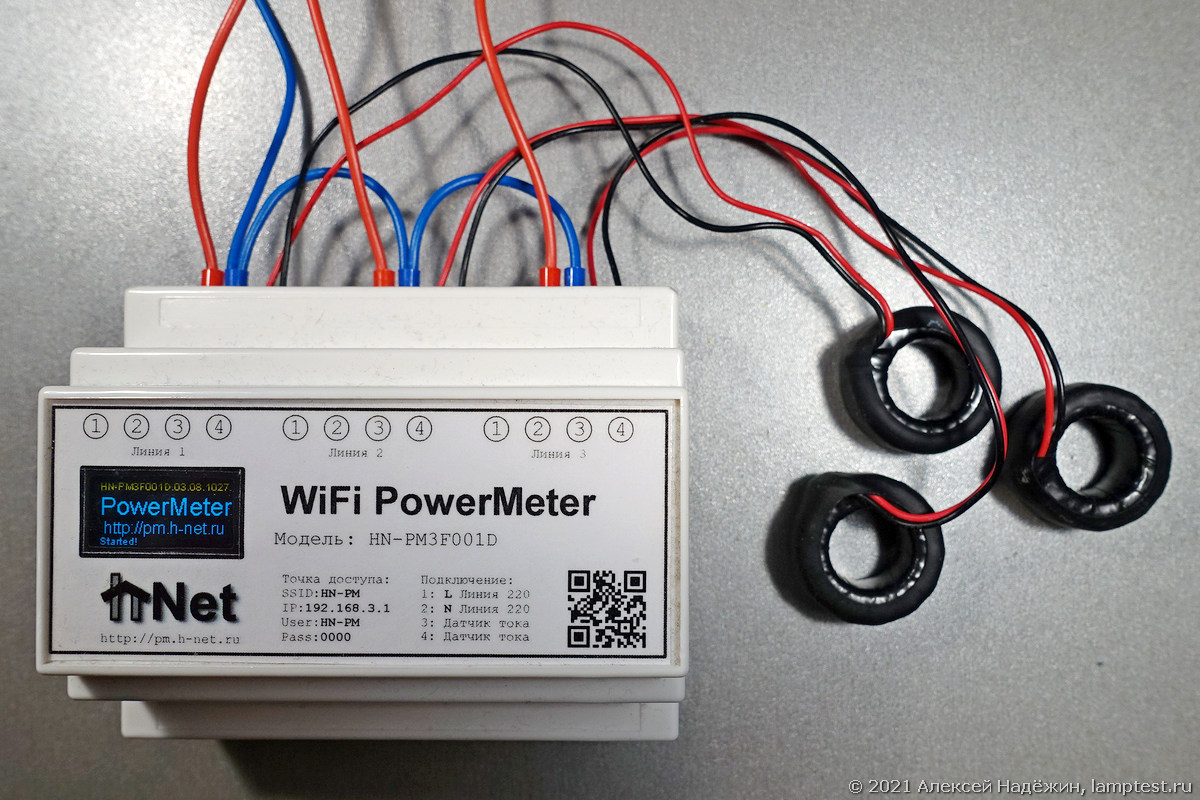
There are four modifications : one- and three-phase, with or without a screen (3980-6760 rubles), in addition, for 300 rubles, you can order the main board (plus 200 rubles for the firmware license) and assemble the device yourself.
Additionally, the devices can be installed up to four internal or external temperature sensors or one temperature / humidity, as well as a relay for remote control of the load.
The device is connected to phase and zero for its own power supply and voltage measurement, the current (and, accordingly, power) is measured using current transformers in the form of rings (through which wires must be passed through which the current will be measured). You can order a device with detachable rings, for the installation of which you do not need to disconnect the wires from the machines.
First of all, I turned on the device on the table, passing its power wire through all three rings. The meter showed its own consumption - 2 W (do not look at the figure 6 W, because I measured the same current three times).
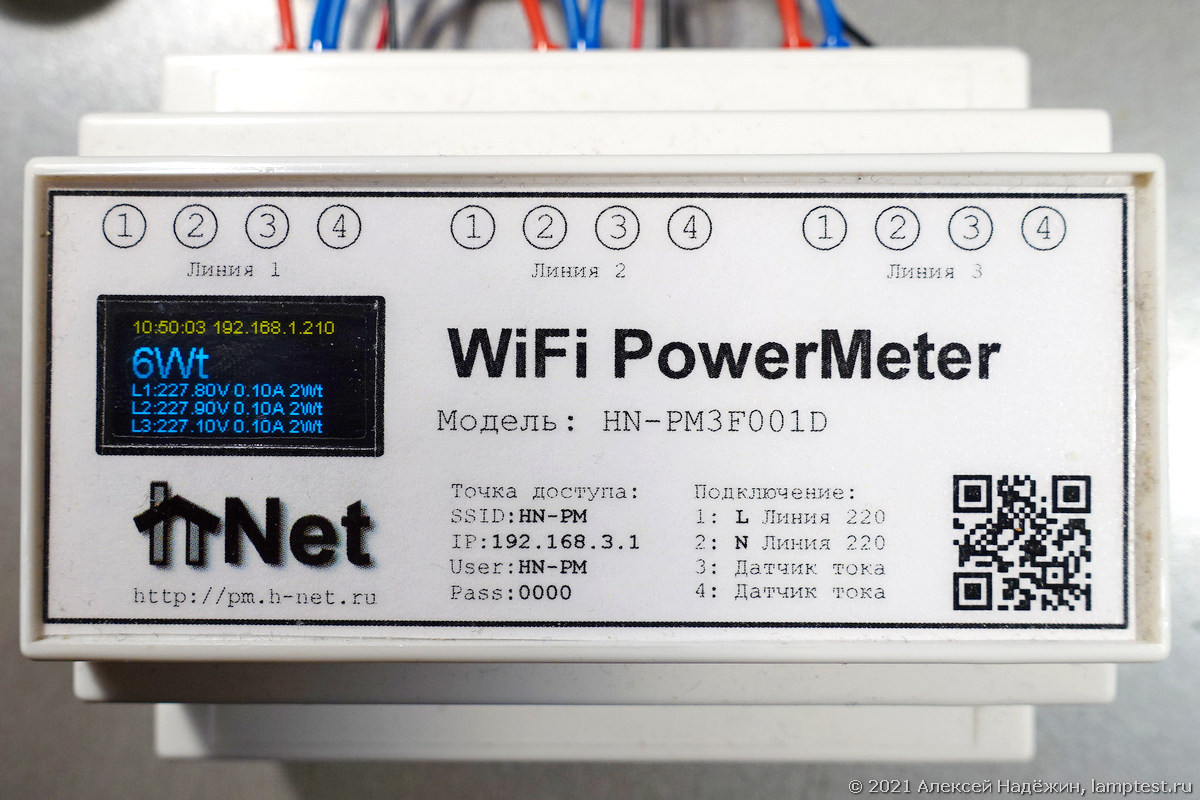
The measurements on the three lines are not carried out simultaneously, so the voltage values on the screen are different, although I connected all the wires to a single phase.
The device connects via Wi-Fi to a home router. At the address displayed on the screen (in my case it is 192.168.1.210), you can go to the device's web page. The current parameters and graphs of their change are displayed there.
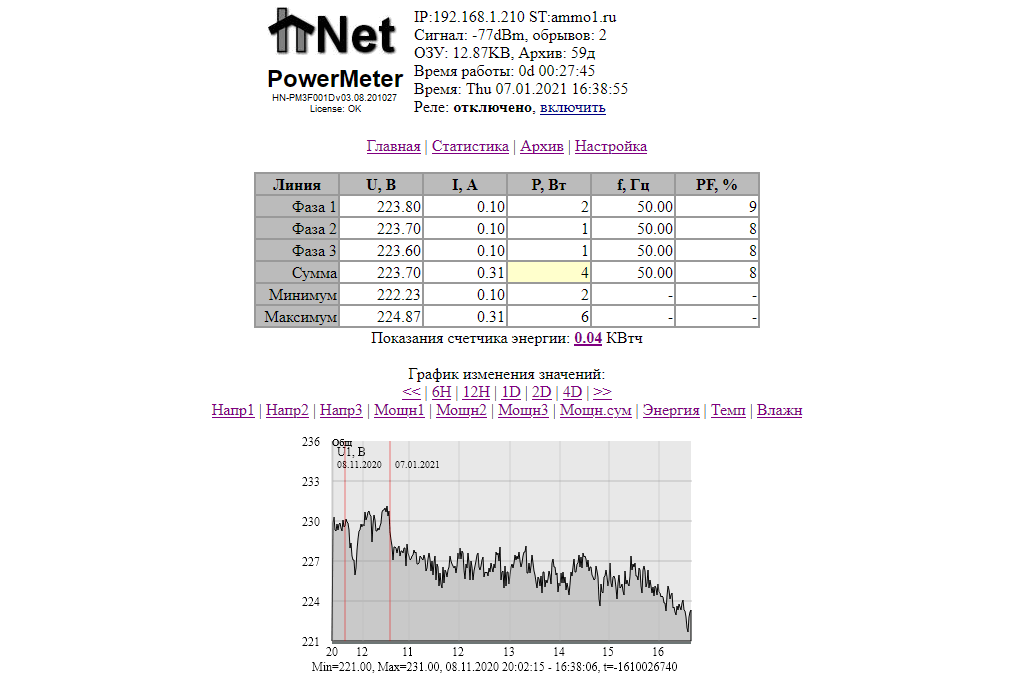
The device is configured there.
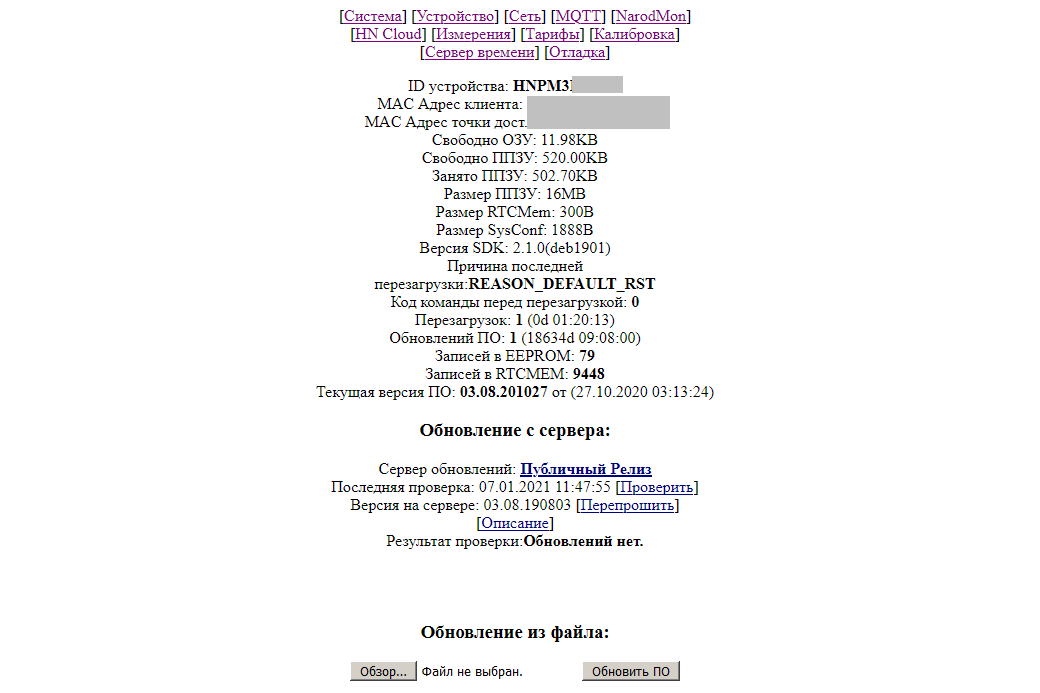
You can configure the parameters and prices of energy for multi-tariff metering so that the device correctly displays the cost of electricity consumed.
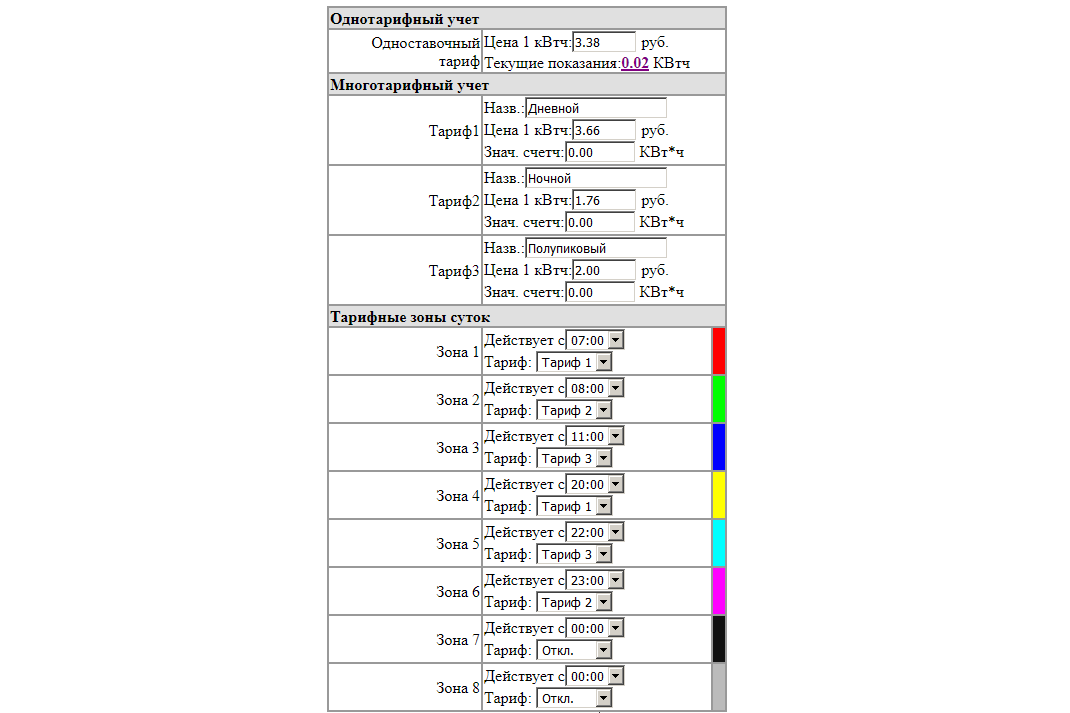
The configuration of the device is being configured.

There is voltage measurement calibration and initial consumption input.
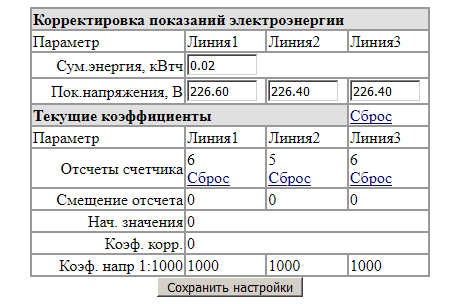
This is how the data is displayed on the People's Monitoring.
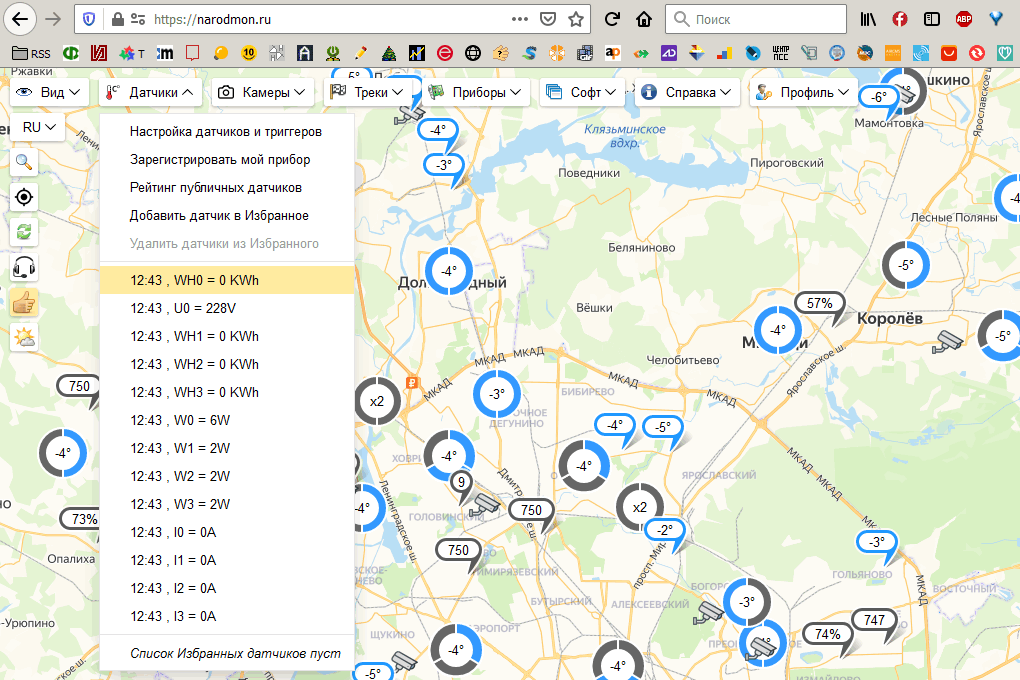
Statistics are also collected there and you can build graphs.

Inside the case, made of non-combustible plastic, there is a multi-storey structure made of the main board and ready-made modules.

The creators of the device did not reinvent the wheel and use ready-made PZEM004T modules to measure all parameters.
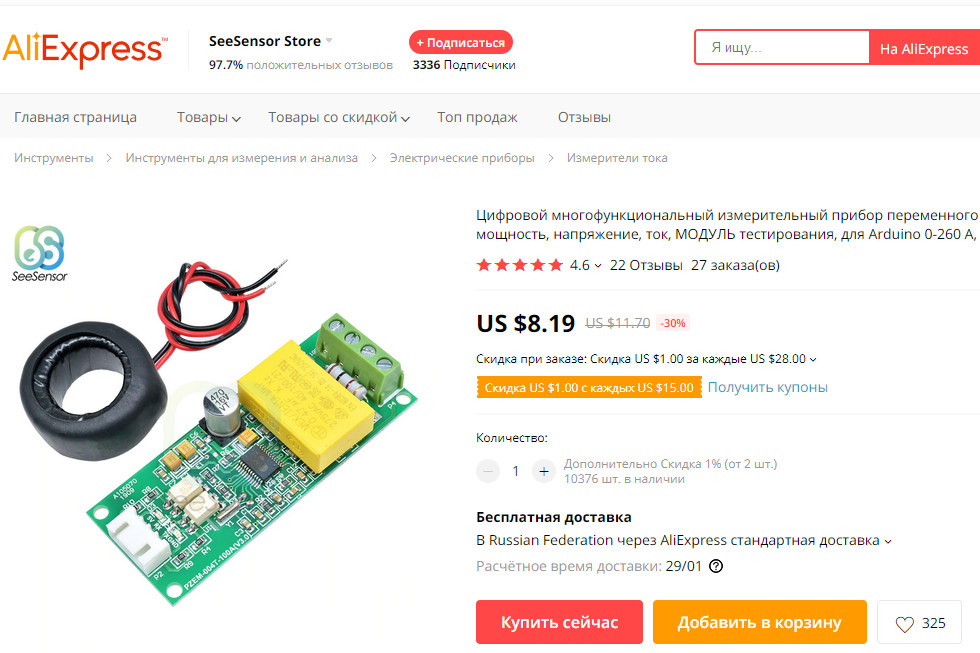
The three-phase model differs from the single-phase only in the number of such modules (three or one) and the case.
The Wemos D1 Mini Pro board on ESP8266 is used as a "brain".
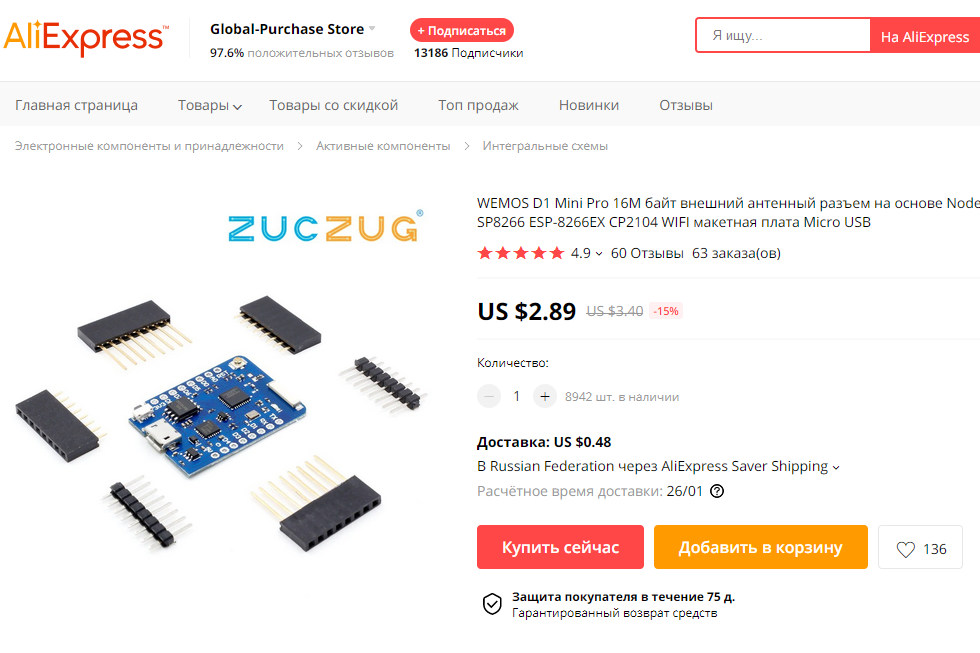
The 5 volt power supply is also ready - Hi-Link HLK-PM01.
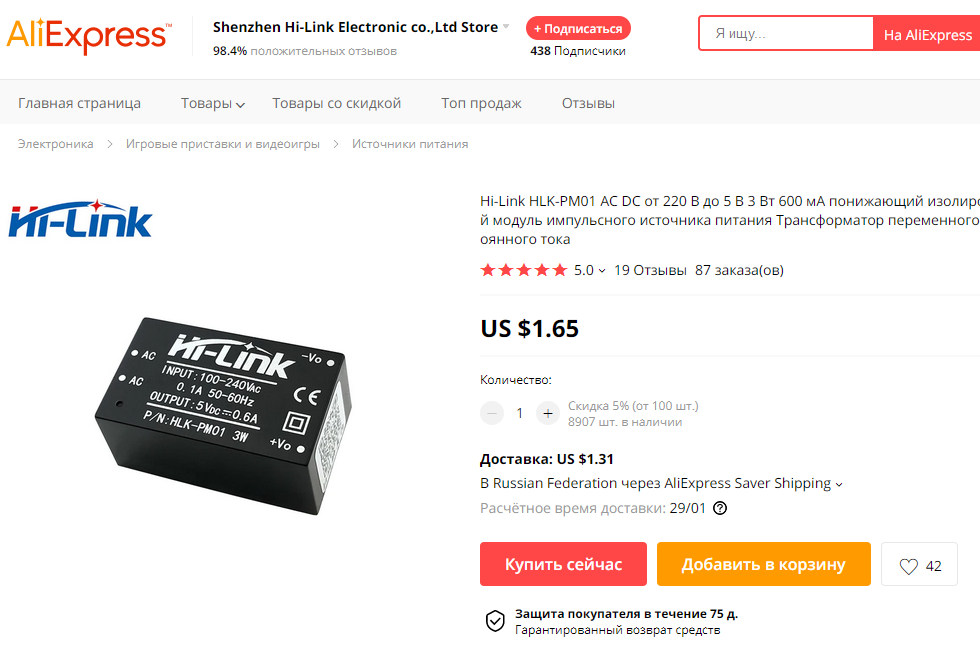
It was not without reason that I showed ready-made components, because the developers sell not only ready-made power meters, but also boards for self-production, and firmware licenses. Homemade products will cost about half the price of the finished device.
Some of you have probably wondered why I need a three-phase power meter in an apartment with a single-phase network. The fact is that it is not necessary to use it to control three phases and can be used to measure three groups of consumers.
To begin with, I plan to connect the light to one line, to the second outlet, and to the third one that works constantly for me and does not turn off when I leave the house - a refrigerator, a router and network equipment, a computer, video surveillance, NAS.
When the statistics of consumption are typed, I will definitely share.
© 2021, Alexey Nadezhin